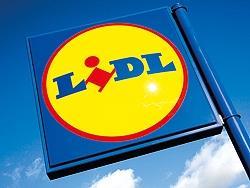Supermarkets have added space at an exponential rate since the start of the credit crunch in 2007 and expansion continues unabated.
Grocery floorspace in the pipeline has increased by 54% since the collapse of Lehman Brothers in 2008 and food remains the only sector in retail development where there is still strong activity.
The upturn in grocery store expansion is now “very broadly based” in both the high street and out-of-town developments, a CBRE study showed.
The scale of proposed new supermarket space is around 15% bigger than Tesco’s entire UK estate.
The property consultancy said economic conditions, as well as a lack of jobs in deprived areas, have led local authorities to be more supportive of commercial development than before the recession.
The amount of new grocery space under construction in September 2011 was 8.88m sqft, up from 2.08m sq ft in March.
An increasing trend towards in-town leasing was observed by CBRE, which noted that leasing has been selected over more traditional grocery freeholds to allow grocers to team up with developers to deal with “town centre first” policies.
Grocery stores account for 36% of all planned shopping developments, compared to 25% in 2007.
The amount of out-of-town space that is under construction has increased 76% to 3m sqft since the collapse of Lehman Brothers.
The big four grocers plan to expand significantly in the coming year. Tesco plans to open 2.1m sqft of space, Sainsbury’s will open 1.3m sqft, Asda 900,000 sqft and Morrisons 600,000 sqft.
CBRE retail lease consultancy director Christopher Keen said: “As supermarket lease-backs are now well trodden ground and are perceived to be one of the most secure property investment vehicles available, raising development capital is not a problem.
“The only real issue for investors is the potential dilution of existing portfolio value through competing supermarket development.”
Keen added: “Thankfully, as the existing distribution of the grocery store stock is known and the grocery pipeline is closely tracked, dilution problems can be predicted well in advance.”


























No comments yet